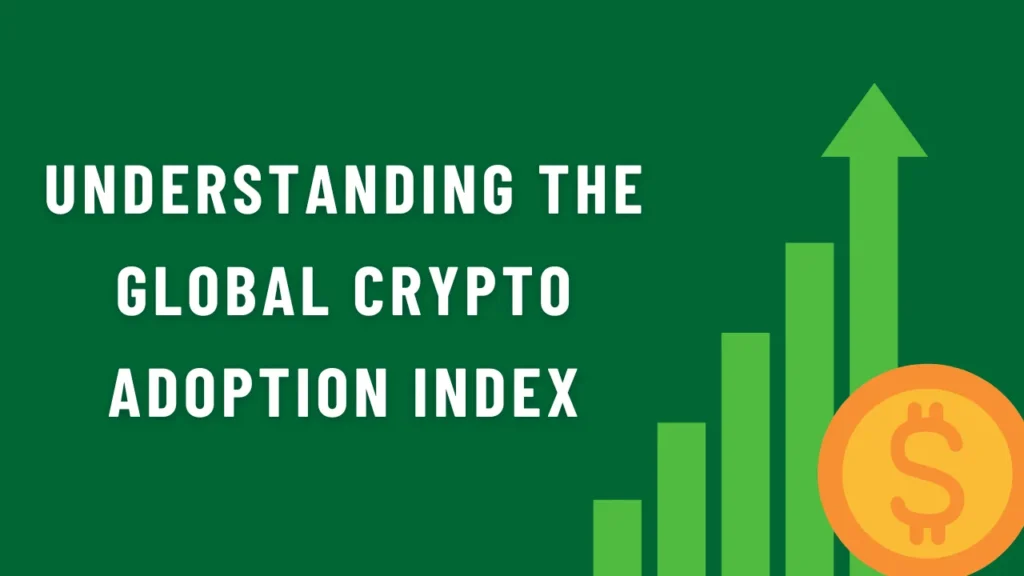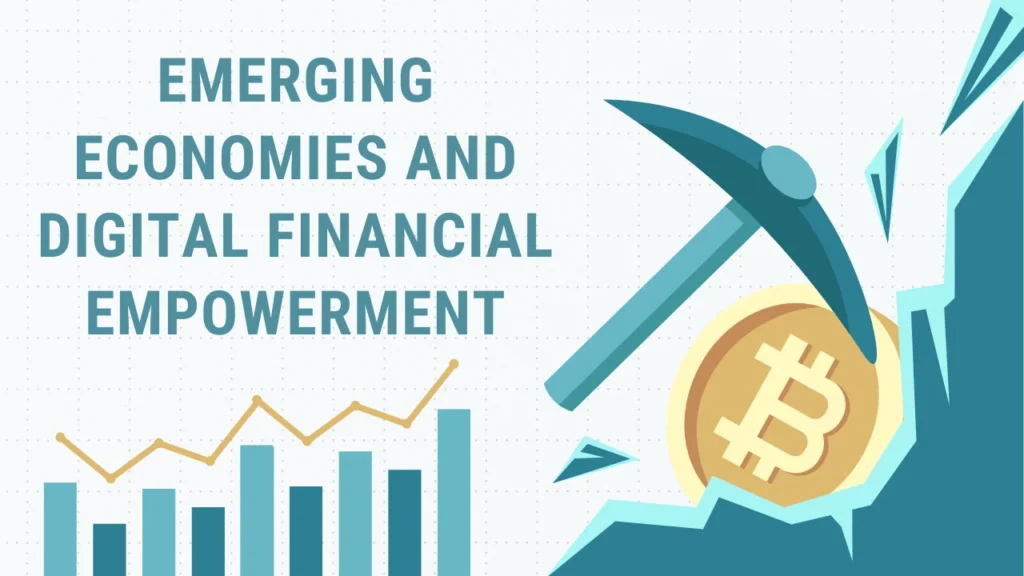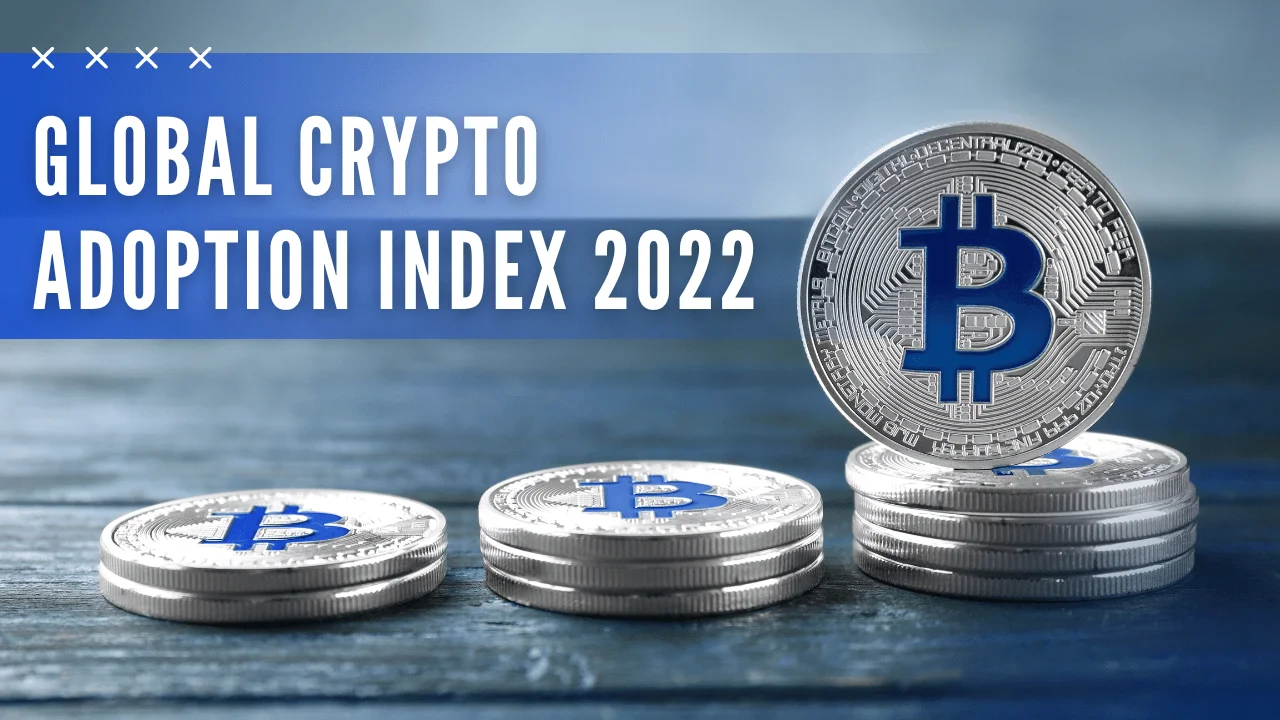An essential piece of literature tracking the meteoric rise of digital money around the world is the Global Crypto Adoption Index 2022. It paints a detailed picture of how cryptocurrency has gone from being an esoteric asset class to a fundamental component of financial markets around the world, particularly in developing nations. This article explores the complex workings of the index, drawing attention to the increase in the use of cryptocurrencies, the methods used to measure this increase, and the major consequences it could have for the future of finance.
Understanding the Global Crypto Adoption Index

The Index provides an interesting look at how widely used cryptocurrencies are around the world. Developed by Chainalysis, it makes use of a fresh approach that records different parts of crypto participation. Here we’ll break down the Index’s key points and explain why they matter for digital finance players.
Decoding the Index’s Methodology
The methodology employed by Chainalysis incorporates a number of metrics, including the amount of cryptocurrency transactions that occur on-chain, retail trading activity, volumes of peer-to-peer exchanges, and engagement with decentralized finance (DeFi) platforms. To make sure that economies with different financial strengths are fairly represented in the adoption rate, these metrics are adjusted for purchasing power parity (PPP) per capita. The meticulous methodology used by the Index highlights its dedication to providing an accurate picture of crypto engagement on a global scale.
The Significance of Emerging Markets
The 2022 Index uncovered an astonishing trend: lower-middle income countries were the first to adopt cryptocurrency. Leading the pack are nations such as Vietnam, the Philippines, Ukraine, India, and Pakistan, which suggests a strong preference for digital currencies to deal with financial instability and take advantage of digital economic opportunities. Highlighting the critical role of cryptocurrencies in fostering financial inclusivity, this trend signifies a paradigm shift in the global financial ecosystem.
China’s Crypto Paradox
China has strict prohibitions against cryptocurrency operations, but the country’s surprising placement in the top tier of the Index suggests that crypto regulation and enforcement are complex. The effectiveness of outright bans in curbing digital currency engagements is called into question by the resilience of crypto activities in China, especially through centralized platforms.
Crypto as an Inflation Hedge
For countries like Argentina and Turkey, where inflation is skyrocketing, cryptocurrency has become a practical way to protect one’s wealth from the depreciation of physical currency. This phenomenon highlights the various uses of digital currencies, which go beyond mere speculation and can act as stabilizing tools during economic uncertainty.
UK’s Crypto Adoption Momentum
The Index’s prominent inclusion of the UK highlights the far-reaching impact of cryptocurrency adoption across key economies. It exemplifies the UK’s proactive involvement with innovations in digital finance and reflects the increasing recognition of digital currencies as essential parts of the modern financial system.
Cryptocurrency Resilience in Bear Markets
Bearish market conditions have caused a decline in the global adoption rates of cryptocurrencies, but there is still a dedicated fan base. A firm belief in cryptocurrencies’ long-term sustainability is indicated by this steadfast dedication, particularly from individuals who entered the crypto space during its speculative peaks in 2020 and 2021. The underlying optimism that keeps fueling the crypto sector’s resilience is exemplified by the perseverance of these participants, especially the substantial holders.
Emerging Economies and Digital Financial Empowerment

The unprecedented growth of cryptocurrency use in developing nations is more than just a passing fad; it represents a sea change in the fight for greater access to digital financial services. A change in focus from conventional banking systems to digital financial services that are more inclusive, accessible, and secure characterizes this transition.
Peer-to-Peer (P2P) Platforms as Catalysts for Inclusion
In areas where traditional banking services are scarce, peer-to-peer crypto exchange platforms have played a crucial role in increasing the use of cryptocurrencies. By allowing users to transact directly with one another, these platforms cut out middlemen and provide access to banking services for the underbanked and unbanked. In this way, peer-to-peer (P2P) exchanges have become an essential component of financial inclusion, opening up the global economy to a wider range of individuals.
Blockchain Technology: Beyond Currency
Beyond digital currencies, blockchain technology—the foundation of cryptocurrencies—offers far-reaching implications. Its ability to transform conventional operational frameworks is demonstrated by its use in making a variety of industries, such as healthcare, supply chain management, and governance, more transparent, secure, and efficient. Realizing they can skip development hurdles, emerging economies have rushed to investigate and implement blockchain solutions.
Cryptocurrency as a Tool for Economic Resilience
Cryptocurrencies have arisen as a means of resistance in the current economic climate, providing a means for people and companies in developing economies to protect their wealth from price increases and currency depreciation. The significance of cryptocurrencies in strategies for economic sustainability is highlighted by the fact that digital currencies have played an especially pivotal role as a medium of exchange and a stable store of value in countries going through economic turmoil.
Decentralized Finance (DeFi) and Its Role in Financial Systems
A paradigm shift in the creation, distribution, and consumption of financial services has been brought about by the meteoric rise of decentralized finance (DeFi), which peaked in 2022. Lending, borrowing, and trading are just a few of the financial activities made possible by DeFi platforms, which democratize access to these services by doing away with the need for traditional financial intermediaries.
Unlocking Financial Services through DeFi
People who were previously unable to use conventional banking services have found new avenues of access thanks to DeFi platforms. The use of blockchain technology by DeFi greatly increases the accessibility of financial services by making all financial transactions transparent, secure, and available to anyone with an internet connection.
Economic Efficiency with DeFi
By replacing the time-consuming and error-prone manual processing of financial transactions with DeFi’s smart contracts, transaction costs are reduced and efficiency is increased. The inefficiency of financial systems is a common problem in developing nations, so this efficiency is especially welcome there.
Fostering Financial Innovation and Creativity
Innovative financial instruments and models have emerged in DeFi, posing a threat to the dominance of traditional banking. With the help of this innovative atmosphere, people are more likely to think outside the box, which in turn increases the potential for financial sector growth and development.
Global DeFi Participation Insights
A rising awareness of DeFi’s ability to revolutionize financial systems is reflected in the surge in its participation around the world. The promise of a more accessible, efficient, and transparent financial system has attracted individuals and institutions alike, making the adoption of DeFi a global phenomenon that is not limited to any specific geography or economic class.
Future Landscape of Crypto Adoption
The global economy is on the brink of a digital financial revolution, and the path of cryptocurrency adoption will change financial services and economic interactions in profound ways. The findings of the Global Crypto Adoption Index 2022 demonstrate how the inexorable advance of digitization is causing paradigm shifts in the world of international finance.
Predicting Crypto Trends in Emerging Markets
Because of the critical need for financial inclusion, economic resilience, and access to global markets, emerging markets are anticipated to maintain their position as crypto adoption trendsetters. This trend will only pick up speed as more and more people have access to smartphones and the internet, opening the door for more people to join the cryptocurrency market.
Regulatory Evolution and Its Impact
The future of cryptocurrency adoption will be greatly influenced by the ever-changing regulatory landscape. The establishment of transparent and encouraging regulatory frameworks is of utmost importance in creating a setting that is favorable to the expansion and development of the cryptocurrency industry, especially as governing bodies face the possibilities and threats posed by digital currencies.
Integration of Crypto in Mainstream Finance
Cryptocurrencies and blockchain technology are becoming more embedded in mainstream finance, which shows that people are starting to see their value in enhancing and supplementing more conventional financial systems. As digital currencies like blockchain-based settlement systems and central bank digital currencies (CBDCs) become more commonplace in the financial sector, their use and acceptance will only grow.
Embracing the Digital Currency Revolution
Because of changes in regulation, new innovations, and the ever-changing nature of the global economy, the path to widespread crypto adoption is anything but linear. However, looking at the big picture, digital currencies and blockchain technology are going to be super important in making the world’s financial system more accessible, efficient, and resilient. The findings of the Global Crypto Adoption Index 2022 will certainly be an essential beacon for politicians, industry players, and digital economy participants as the globe makes its way through this digital revolution.
Frequently Asked Questions
What drives cryptocurrency adoption in emerging markets?
Emerging markets are increasingly turning to cryptocurrencies as a means to mitigate financial instability, leverage remittances, and access digital finance opportunities previously unavailable due to traditional banking limitations.
How do geopolitical events affect global crypto adoption rates?
Geopolitical uncertainties often accelerate crypto adoption as individuals and businesses seek alternative stores of value and means of transaction that are not tied to the geopolitical fortunes of any single country.
What is the impact of DeFi on global cryptocurrency adoption trends?
DeFi platforms have significantly contributed to crypto adoption by offering decentralized lending, borrowing, and trading services, thereby expanding the utility of cryptocurrencies beyond mere assets to comprehensive financial tools.
How significant is peer-to-peer (P2P) platform usage in crypto adoption?
P2P platforms facilitate the direct exchange of cryptocurrencies without the need for intermediaries, making them crucial for adoption in regions with stringent regulations or limited access to traditional financial services.
What challenges does crypto adoption face in strictly regulated countries?
In countries with tight crypto regulations, adoption faces hurdles such as limited access to crypto exchanges, heightened legal risks, and the potential for outright bans, which can stifle the growth and accessibility of cryptocurrencies.
Also Read: Crypto Companies in India 2024
Conclusion
According to the findings of the Global Crypto Adoption Index 2022, we are witnessing a pivotal moment where digital currencies transcend their status as mere trends, becoming indispensable components of a fairer financial landscape. The insights gleaned from the Index underscore the rapid evolution of the crypto sphere, aligning with the broader global shift towards digital financial innovations poised to reshape worldwide economic dynamics. To stay abreast of the dynamic realm of cryptocurrencies and gain insight into the future trajectory of global finance, it is crucial to grasp these emerging trends and their implications.

Timothy Jensen is an expert writer who specializes in the world of cryptocurrencies, including blockchain technology and Bitcoin. He has a passion for explaining complex topics in an easy-to-understand way. Timothy’s work aims to demystify the digital currency landscape for his readers.

